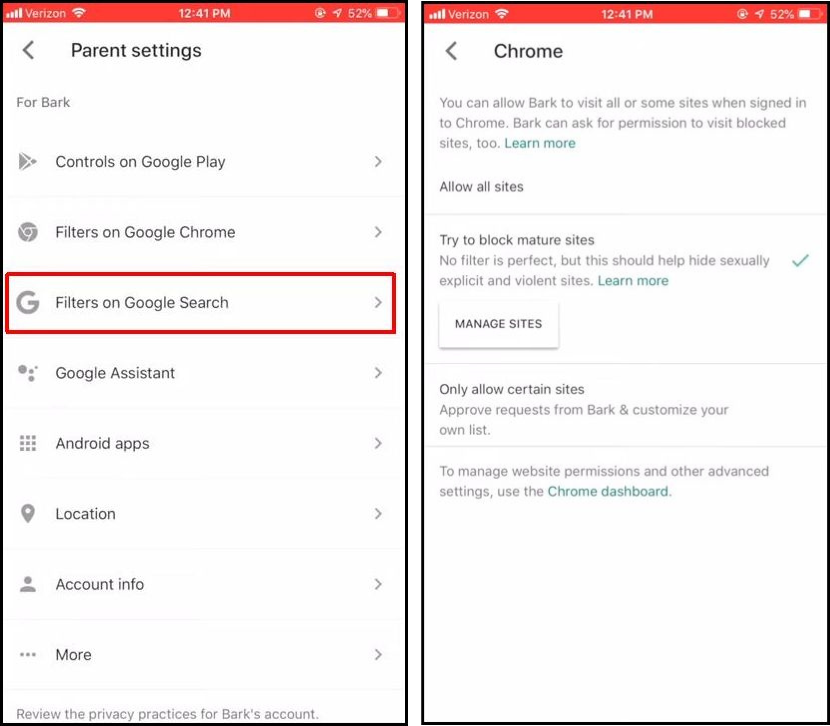How to Block Adult Websites on Your Phone Forever
The internet is undeniably a powerful force in our lives, making daily tasks more convenient, efficient, and interconnected. However, it also introduces significant risks and drawbacks that cannot be ignored.

It is crucial to remember that the internet should not be navigated without caution. It contains scams, explicit content, and graphic media, some of which can inadvertently be accessed by young users. Even those who are aware of these risks can occasionally encounter inappropriate material.
For this reason, parents should proactively limit the content their children can access online, prioritizing safety and healthy development. Usually, this means blocking websites that display explicit material, gambling, and other adult-oriented content.
In this article, we provide a clear, step-by-step guide to permanently blocking adult websites on your phone by using several effective and user-friendly methods.
Best Ways to Block Adult Websites on My Phone
There are numerous websites labeled as “18+” for a reason. These sites can be particularly harmful to young users, exposing them to content that can negatively affect their mental well-being.
Below are effective strategies that work for both Android and iOS devices, ensuring that adult websites remain blocked permanently:
1. Enabling Google Safe Browsing
Safe Browsing is a feature offered by browsers such as Google Chrome. It helps prevent explicit or inappropriate images, videos, and links from appearing in your search results, adding an important layer of safety.
While the process might differ slightly depending on the browser you use, the general steps remain consistent:
- Open Chrome on your device.

Tap the three vertical dots - Tap the three vertical dots in the corner and select Settings.

Press Settings - Scroll down to Privacy and Security.

Select Privacy & Security - Under the Security section, tap Safe Browsing.

Choose Safe Browsing - Select “Enhanced protection” from the available options.

Types of Protections
For browsers like Opera, Safe Browsing can also be enabled following a similar process. Although minor steps may vary, the fundamental concept remains the same and the protection is just as effective.

2. Turn on SafeSearch
In addition to Safe Browsing, Google provides SafeSearch—a dedicated feature for its search engine, available through the Google app and web browser. SafeSearch specifically filters search results to exclude explicit or adult content, promoting a safer browsing experience by systematically blocking or filtering content that may be inappropriate for all audiences.
- Launch the Google app on your phone.
- Tap your Profile icon at the top right corner.

Tap your profile icon - Go to Settings and select SafeSearch.

Head to SafeSearch - Choose between Filter (which blocks explicit content) and Blur (which blurs inappropriate images). We recommend Filter for complete removal of unsuitable content from search results.

Choose Settings
3. Activate Store Restrictions
Even if adult websites are blocked, children may still access inappropriate apps from your device’s app store. Store restrictions are essential for preventing downloads of adult-themed apps and games.
For Google Play Store:
- Open the Google Play Store.
- Tap the profile icon at the top left to open the menu.
- Select Settings > Family > Parental controls.

- Enable Parental controls and set a secure PIN.

Create a secure PIN - Select the maturity level for apps and games. Setting it at 12+ is recommended for most teenagers; increase it to 16+ only if needed.

For App Store:
On iPhone devices, store restrictions can be managed through the Settings menu without any need to access the App Store directly.
- Open your iPhone Settings.
- Go to Screen Time > Content & Privacy Restrictions > Content Restrictions.

Head to Screen Time > Content & Privacy Restrictions > Content Restrictions - Select Apps. You may also review restrictions for music, movies, TV shows, and more.

Select Apps - Set the age limit for apps, such as 12+ for teenagers.

Set age limit
4. Set Up OpenDNS On Your Phone
A DNS server acts as the internet’s phone book, translating website names into IP addresses. When you type a website URL, your device uses the DNS server to find the correct IP address and display the website.
OpenDNS improves upon standard DNS servers by offering content filtering. This feature allows you to block specific websites, preventing access even if the site address is entered directly. OpenDNS gives you the flexibility to block entire categories or specific keywords related to adult content. You can also manually add websites to your blacklist, providing robust control over your family’s browsing safety.
Setting up OpenDNS is a highly effective strategy for safeguarding your family from inappropriate online content.
For Android Users
- Open your phone’s Wi-Fi settings. This option should appear near the top of the Settings menu.

Open your network - Long-press the Wi-Fi network you are connected to, then adjust IP settings from DHCP to Static.

Change IP settings to Static - In the DNS 1 and DNS 2 fields, enter 208.67.222.222 and 208.67.220.220 respectively.

Change DNS servers - Save your settings to apply content filtering through OpenDNS.

For iPhone Users
- Access Wi-Fi settings from your home screen or Settings app.

Open Wi-Fi settings - Select your Wi-Fi network and tap the blue info icon (ⓘ) next to it.

Click the blue icon - Tap Configure DNS.

Head to Configure DNS - Switch DNS configuration to Manual, tap Add Server, and enter the OpenDNS addresses.

Change to Manual and add server
OpenDNS provides both free and paid DNS plans, each with pre-configured settings to block adult content or enable custom filtering to meet your specific needs.
5. Try A Parental Control App
Several Parental Control apps are available for both Android and iOS. Installing one can greatly enhance your family’s digital safety by offering options for web filtering, device monitoring, and screen time management.
Popular choices, such as Google Family Link and Norton Family Parental Control, allow you to filter mature content, monitor device activity, and set usage restrictions.
While paid parental control apps offer comprehensive features, Google Family Link is a highly capable, free solution for setting up parental controls.
- Start by creating a Gmail account for your child.

Create Gmail account - When prompted, enter and verify the parent’s email address.

Verify the account - Install Google Family Link on your child’s device.

Install Google Family Link - Sign in with your child’s new email address.
- Follow the in-app instructions, which may include installing Google Family Link Manager.

Follow the on-screen instructions - Install Google Family Link on your own device as well. The app enables you to block apps, track the location of your child’s device, and manage a range of controls.
- To restrict website access, tap the three dots and go to Parent Settings.

Tap on the three dots - Select “Filters on Google Chrome” to block or allow specific websites according to your preferences.

Block mature sites
To ensure your child cannot change the parental control settings you’ve set up.
- On the Homepage of the Family Link app, scroll down to the bottom.
- Select your child’s device.

Select your child’s phone - Navigate to App Permissions.

Head to App Permissions - Click on any app and choose “Only Parents” to ensure only a parent can change its permissions.

Adjust permissions accordingly
How To Block Adult Websites On iPhones
Unlike Android, iOS includes a powerful built-in content filter named Screen Time. This tool lets iPhone users restrict access to specific websites or other inappropriate media right from their device settings.
To enable content filtering using Screen Time, follow these instructions:
- Open Settings and choose Screen Time.

Select screen time - Turn Screen Time On if it is currently disabled, and set a password if prompted.
- Go to Content & Privacy Restrictions.

Tap on Content & Privacy Restrictions - Select Content Restrictions > Web Content.

Head to Content Restrictions > Web Content
- Choose “Limit Adult Websites”.

Press Limit Adult Websites - With this option enabled, access to adult websites will be blocked. You also have the ability to manually add websites to either the allowed or blocked list.
 Reviewed by
Reviewed by 




